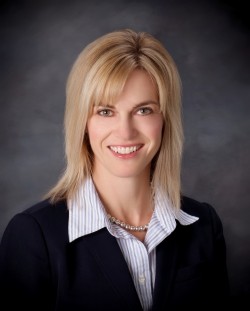News | November 9th, 2016

By C. S. Hagen cshagen@hpr1.com
HPR Columnist Jim Fuglie, past Executive Director of the North Dakota Democratic-NPL Party, thought that “The rest of the North Dakota statewide races feature a lackluster slate of candidates on both sides, none of whom I can see with much more than a long shot at future political stardom in North Dakota, with the possible exception of Republican Public Service Commissioner Julie Fedorchak.
“She (and all the other Republicans on the statewide ballot) will win her election this year and, like her predecessor in that office, Kevin Cramer, she has a future beyond the Public Service Commission, I think, but that’s a ways off, because she’s a pretty dedicated mother to her three school-age children right now. She needs to hope Burgum decides to serve eight years in office, and not just four. She could be our first woman governor.”
State government officials say Dakota Access LLC, the subsidiary of Energy Transfer Partners, did everything right. North Dakota’s government supports the company’s claims by declaring the pipeline is a public utility. The opposition says differently, believing the pipeline is for economic development, to line Big Oil’s pockets and ship Bakken oil to Texas for refinement and eventual export.
“They [DAPL] meet the definition of utility in law, as they are transporting liquid hydrocarbons,” Chairman of the North Dakota Public Service Commission Julie Fedorchak said.
Her commission’s job is not to kill projects, but to investigate and issue permits, and Dakota Access has secured the necessary permits. The DAPL pipeline route in North Dakota, approximately 350 miles long, roughly follows the 1,408-mile-long Northern Border Pipeline route, which was constructed in 1982.
“That’s one of the best practices in pipeline development, is following pre-existing corridors,” Fedorchak said.
Furthermore, the pipeline in the Peace Garden State is solely on U.S. Army Corps of Engineers’ land, and does not have even one case of eminent domain usage against a private individual, Fedorchak said. “All the easements were obtained voluntarily and only go through Corps land.”
The North Dakota Public Service Commission’s work on the pipeline began in 2014, she said, and they made 140 adjustments after more than 500 cultural artifact sites were found. Not only did archaeologists find cairns and gravesites, but also discovered old building foundations, and prairie alligators, or farming equipment considered historically significant. The investigative process took 13 months, ending in January 2016, and the appropriate permits were issued.
“The last three or four months, people said we were dragging our feet,” Fedorchak said. “That’s a decent amount of time. It wasn’t a hasty process; we certainly didn’t cut any corners.”
She also said the Standing Rock Sioux Tribe was consulted, and wishes the tribe had come forward during the consultative process.
“The tribe just failed to take advantage of them for several years,” Fedorchak said. “We did make a lot of effort to involve the public, to engage -- well, everyone likes to dismiss us as having our minds already made up, but it is just not the case here. The tribe did have multiple consultations... it would have been very productive to have them involved at that point.”
Standing Rock says they were not consulted properly, and is suing the U.S. Army Corps of Engineers, in part with claims that the consultation process with the tribe – a sovereign nation – was lacking.
With a possible reroute on the table, Fedorchak said the new pipeline process could take years.
“If the company comes back to us because they are forced to reroute and apply for a reroute permit, we will do the same thing,” Fedorchak said. “My personal feeling is that there is no reroute that will be palatable to the people who oppose this.
“It’s naïve to think that it will work.”
December 16th 2025
November 14th 2025
October 13th 2025
October 13th 2025
October 6th 2025

_(1)__293px-wide.png)



__293px-wide.jpg)